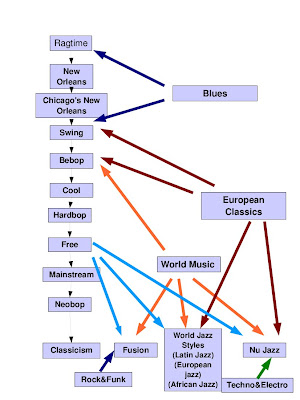
Jazz music is quite difficult to define because it evaluates from early ragtime and blues ages to nowadays fusion by many influences. Joachim Berendt in the book The Jazz Book: From Ragtime to Fusion and Beyond
The basic elements which extract jazz from others music forms are: syncope, vibrato, continual rhythm in “4/4” tact, polyphonic ensemble playing, varying degrees of improvisation, and often deliberate distortions of pitch and timbre. Jazz is characterized by a strong but flexible rhythmic understructure with solo and ensemble improvisations on basic tunes and chord patterns and, more recently, a highly sophisticated harmonic idiom.
Joachim-Ernst Berendt (1922–2000) was an internationally known authority on jazz and the author of more than 20 books. His Jazz Book was first published in 1952 and has been translated into many languages. Günther Huesmann studied musicology, film and television, and pedagogy; a festival organizer and writer for jazz radio shows, he was responsible for the previous revision of The Jazz Book.


